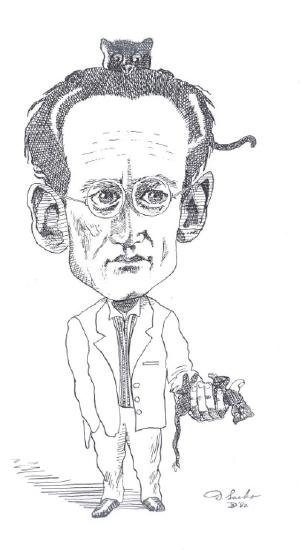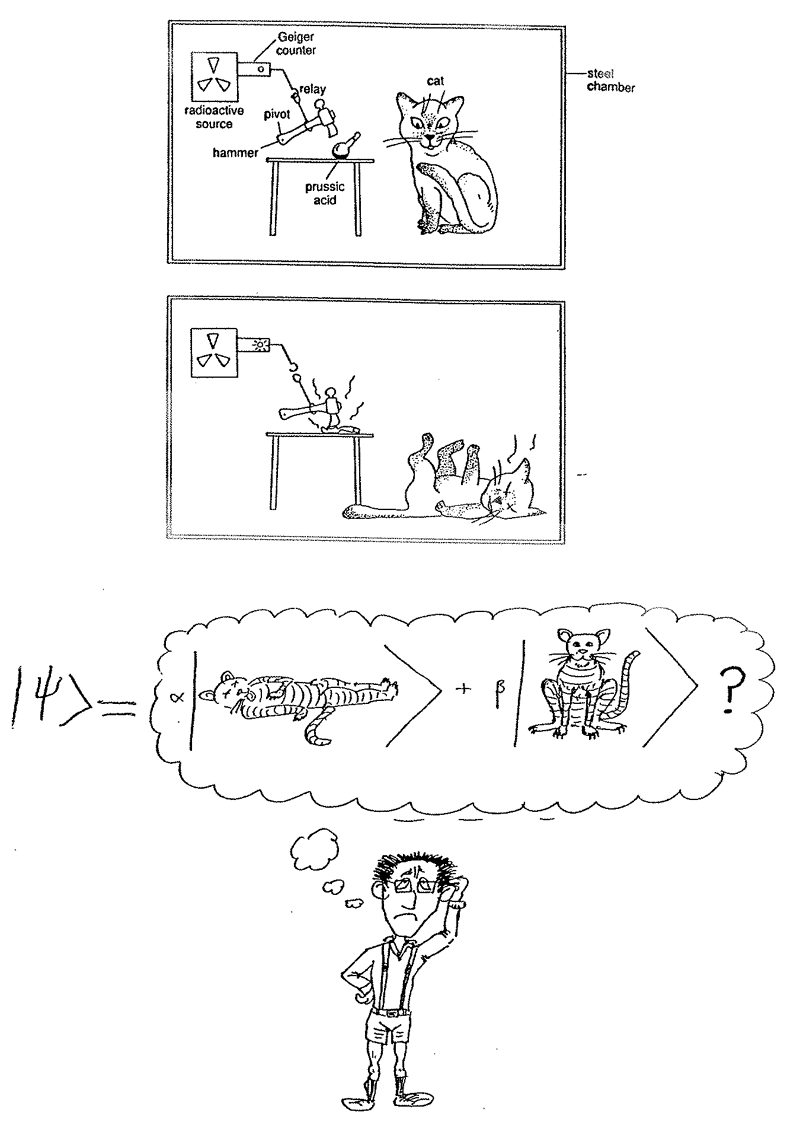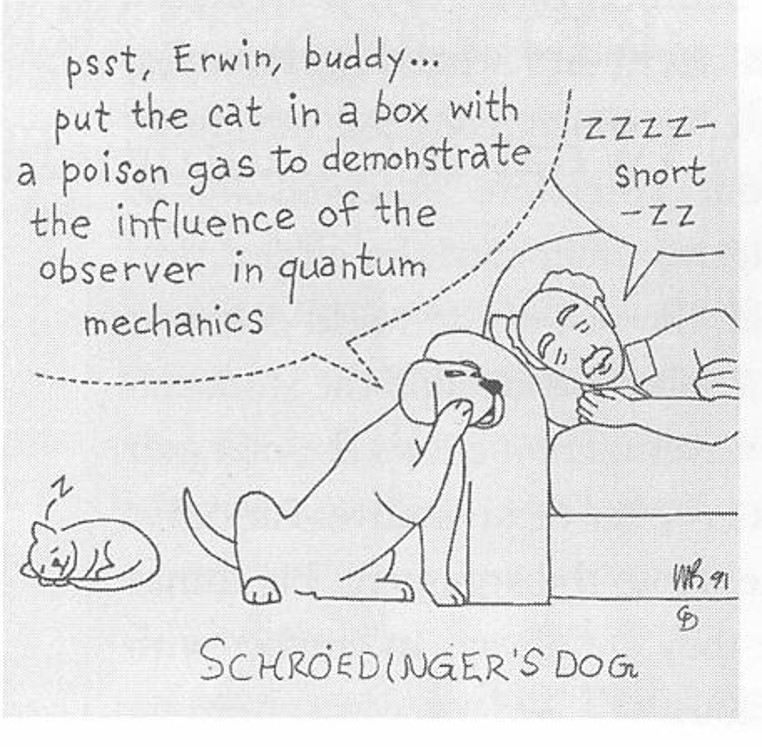1.96: Quantum Potpourri - An Attempt to Demonstrate Two Fundamental Quantum Concepts- Wave-particle Duality and The Superposition Principle
- Page ID
- 158515
Quon
- An entity that exhibits both wave and particle behavior in the peculiar quantum mechanical manner. (Nick Herbert)
- Examples from chemistry:
- Electrons
- Protons
- Neutrons
- Photons
Wave-particle Duality Illustrated
- Source (light bulb, sun) emits light
- Interference fringes are observed suggesting wave-like behavior.
- However, the detector (eye) registers particles (retinal absorbs a photon and changes shape ultimately causing a signal to be sent to the brain via the optic nerve)
- We detect particles, but we predict what will happen, or interpret what happened, by assuming wave-like behavior
- “Everything in the future is a wave, everything in the past is a particle.” Lawrence Bragg

Retinal Absorbs a Photon
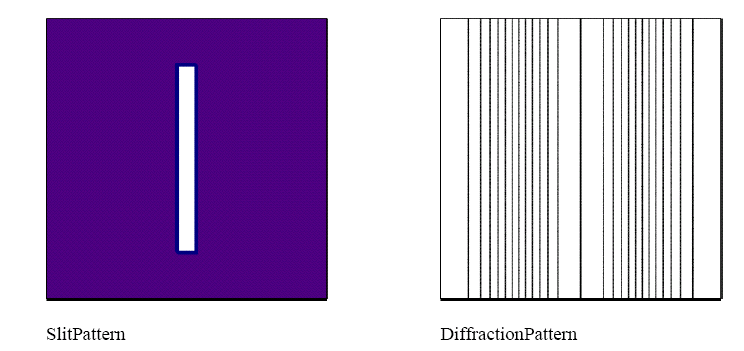
Other Diffraction Phenomena
Einstein and Schrödinger
Gott würfelt nicht.
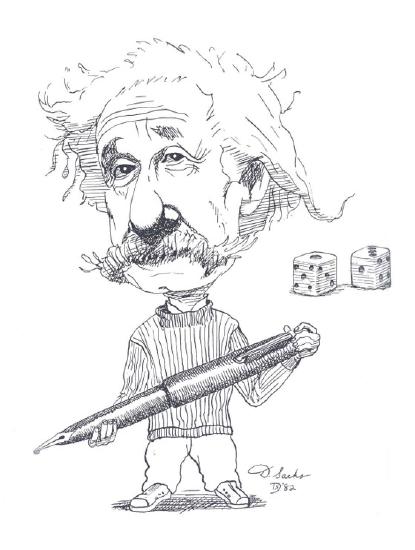

The Quantum View of Playing Dice
\[
|\Psi\rangle_{a}|\Psi\rangle_{b}=\frac{1}{\sqrt{6}}[|1\rangle+|2\rangle+|3\rangle+|4\rangle+|5\rangle+|6\rangle] \frac{1}{\sqrt{6}}[|1\rangle+|2\rangle+|3\rangle+|4\rangle+|5\rangle+|6\rangle]
\nonumber \]
\[
|\Psi\rangle_{a}|\Psi\rangle_{b}=\frac{1}{6} \left[ |1||1\rangle+|1||2\rangle+|1\rangle|3\rangle+|1\rangle|4\rangle+|1\rangle|5\rangle+|1\rangle|6\rangle \\ +|2\rangle|1\rangle+|2\rangle|2\rangle+|2\rangle|3\rangle+|2\rangle|4\rangle+|2\rangle|5\rangle+|2\rangle|6\rangle \\ +|3\rangle|1\rangle+|3\rangle|2\rangle+|3\rangle|3\rangle+|3\rangle|4\rangle+|3\rangle|5\rangle+|3\rangle|6\rangle \\ +|4\rangle|1\rangle+|4||2\rangle+|4\rangle|3\rangle+|4\rangle|4\rangle+|4||5\rangle+|4\rangle|6\rangle \\ +|5\rangle|1\rangle+|5\rangle|2\rangle+|5\rangle|3\rangle+|5\rangle|4\rangle+|5\rangle|5\rangle+|5\rangle|6\rangle \\ +|6\rangle|1\rangle+|6\rangle|2\rangle+|6\rangle|3\rangle+|6\rangle|4\rangle+|6\rangle|5\rangle+|6\rangle|6\rangle \right]
\nonumber \]

Electronic Structure and the Superposition Principle
Electrons in atoms or molecules are characterized by their entire distributions, called wave functions or orbitals, rather than by instantaneous positions and velocities: an electron may be considered always to be, with appropriate probability, at all points of its distribution, which does not vary with time. (F. E. Harris)
For example, the hydrogen atom electron is in a stationary state which is a weighted superposition of all possible distances from the nucleus. The electron is not orbiting the nucleus; it does not execute a classical trajectory during its interaction with the nucleus.
From the quantum mechanical perspective, to measure the position of an electron is not to find out where it is, but to cause it to be somewhere. (Louisa Gilder)
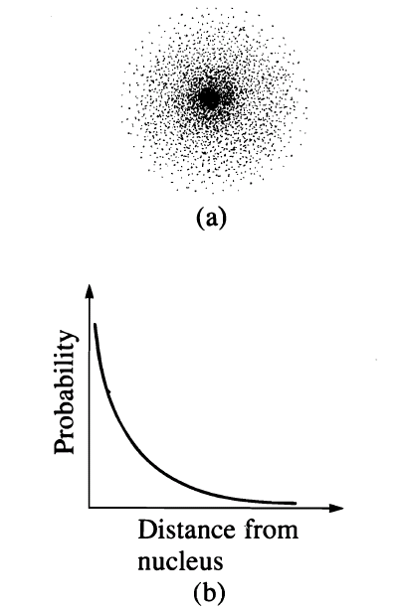
Resonance from the Quantum Mechanical Perspective
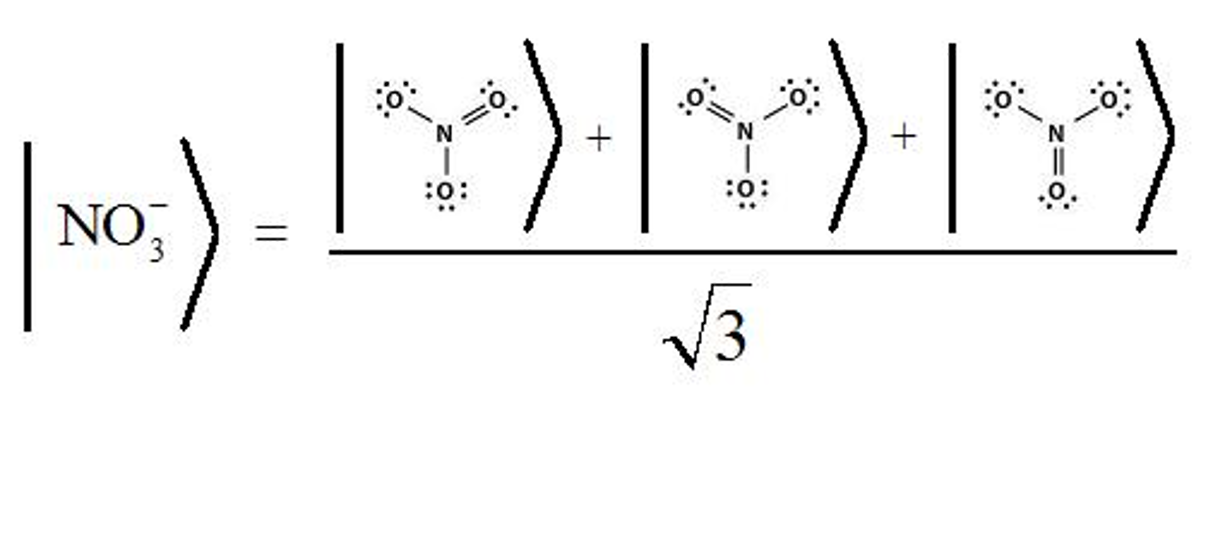
Another Example of the Superposition Principle

\[
|\uparrow\rangle_{s} \stackrel{\mathrm{Bs}_{1}}{\longrightarrow} \frac{1}{\sqrt{2}}\left[|\uparrow\rangle_{A}+|\rightarrow\rangle_{B}\right]
\nonumber \]
Mach-Zehnder Interferometer
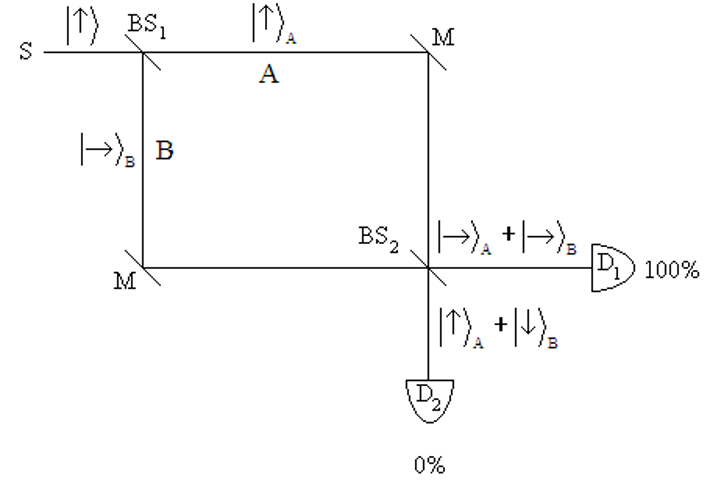
Quantum Mechanical Analysis of the Three Polarizer Paradox

Quantum Quotes
- If we want to describe what happens in an atomic event, we have to realize that the word “happens” can only apply to the observation, not to the state of affairs between two observations. [Werner Heisenberg]
- I think it is safe to say that no one understands quantum mechanics. Do not keep saying to yourself, if you can possibly avoid it, 'But how can it possibly be like that?' because you will go down the drain into a blind alley from which nobody has yet escaped. Nobody knows how it can be like that. [Richard Feynman]
- Any one who is not shocked by quantum mechanics has not fully understood it. [Niels Bohr]
- The mathematical predictions of quantum mechanics yield results that are in agreement with experimental findings. That is the reason we use quantum theory. That quantum theory fits experiment is what validates the theory, but why experiment should give such peculiar results is a mystery. This is the shock to which Bohr referred. [Marvin Chester with slight modifications by Frank Rioux]
- A philosopher once said, ‘It is necessary for the very existence of science that the same conditions always produce the same results.’ Well, they don’t! [Richard Feynman]
- After the first world war I gave a great deal of thought to the theory of quanta. It was then that I had a sudden inspiration. Einstein's wave-particle dualism for light was an absolutely general phenomenon extending to all physical nature. De Broglie
- He (de Broglie) has lifted one corner of the great veil. Einstein
- Everything in the future is a wave, everything in the past is a particle. Lawrence Bragg
- Something unknown is doing we don't know what. Sir Arthur Eddington commenting on the quantum mechanical view of the electron.
- Thirty-one years ago, Dick Feynman told me about his 'sum over histories' version of quantum mechanics. "The electron does anything it likes," he said. "It just goes in any direction at any speed, ...however it likes, and then you add up the amplitudes and it gives you the wave function." I said to him, "You're crazy." But he wasn't. Freeman Dyson
- I still believe in the possibility of a model of reality, that is to say, of a theory, which represents things themselves and not merely the probability of their occurrence. Einstein




